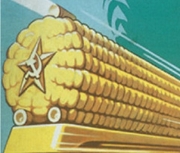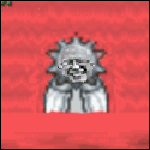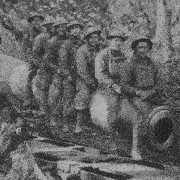|
What is the most powerful flying bug? This poll is closed. |
|||
|---|---|---|---|
| 🦋 |
|
15 | 3.71% |
| 🦇 |
|
115 | 28.47% |
| 🪰 |
|
12 | 2.97% |
| 🐦 |
|
67 | 16.58% |
| dragonfly |
|
94 | 23.27% |
| 🦟 |
|
14 | 3.47% |
| 🐝 |
|
87 | 21.53% |
| Total: | 404 votes | ||
|
genericnick posted:Hm. So there are supposedly some internal brigades that aren't in this list. Wouldn't this mean that we really can't draw any kind of conclusions from the lack of Ukranian sourced equipment? Me, spinning on the spot with both arms outstretched: This is just the vanguard recon force, they have a million highly trained battle hardened Ukranians being administered by a completely different floor of that HQ which is why they weren't on that particular collection of documents. Fully armed with the complete contents of the now emptied NATO armories. Victory any day now. Any. Day.
|
|
|
|

|
| # ? May 29, 2024 13:27 |
|
to be fair i wouldn't be surprised if there are a couple of ukrainian private armies that are kept off the books, but those wouldn't be thrown away on hopeless offensives
|
|
|
|
Nuclear War posted:The amount of times I've had to yell at soldiers for doing this exact thing is astronomical. it happens all the time. Or taking pictures of clearly marked SECRET or TS briefing notes on a screen "because i cant remember all that" username post combo
|
|
|
|
genericnick posted:Hm. So there are supposedly some internal brigades that aren't in this list. Wouldn't this mean that we really can't draw any kind of conclusions from the lack of Ukranian sourced equipment? There are obviously other units in the field, someone needs to be holding the line somewhere else. This is particularly illustrating (well supposedly at least) the assault force that will attack in the south (maybe). The issue is that very little of the equipment for that force is Ukraine, which suggests that most of it has probably been lost (since we know other units on the line have been taking very heavy attrition).
|
|
|
|
Ardennes posted:There are obviously other units in the field, someone needs to be holding the line somewhere else. This is particularly illustrating (well supposedly at least) the assault force that will attack in the south (maybe). I mean I haven’t seen it in that blurry scan, but according to the snek dude three internal brigades should be involed in this clusterfuck, equipped with ??and with total strength of ??? Makes sense that they would concentrate their remaining equipment there. If any of this is true and they exist.
|
|
|
|
genericnick posted:I mean I haven’t seen it in that blurry scan, but according to the snek dude three internal brigades should be involed in this clusterfuck, equipped with ??and with total strength of ??? Makes sense that they would concentrate their remaining equipment there. If any of this is true and they exist. I mean that is possible...just that 3 brigades isn't much in the context of this war.
|
|
|
genericnick posted:I mean I haven’t seen it in that blurry scan, but according to the snek dude three internal brigades should be involed in this clusterfuck, equipped with ??and with total strength of ??? Makes sense that they would concentrate their remaining equipment there. If any of this is true and they exist. Wrong, they won't be equipped with ???, they will be equipped with XXX (TBD)
|
|
|
|
|
The british in their typical understated way have announced that Russia has taken central Bakhmut
|
|
|
|
the Bakhmut situation has developed not necessarily to Ukraine's advantage, while the general trends of the world have all turned against her interest
|
|
|
|
Ardennes posted:the Bakhmut situation has developed not necessarily to Ukraine's advantage, while the general trends of the world have all turned against her interest Most pertubatory my dear chap. Tea and scones?
|
|
|
|
DancingShade posted:Most pertubatory my dear chap. Cream then jam or jam then cream?
|
|
|
|
Regarde Aduck posted:Cream then jam or jam then cream? Oh come now, the help can do that for you. But if you ever find yourself in a pickle because your manservant is out fetching you a gallon of gin from the merchant down yonder then jam blob followed by hearty dollop of cream.
|
|
|
|
DancingShade posted:Oh come now, the help can do that for you. 
|
|
|
|
Regarde Aduck posted:Cream then jam or jam then cream? We regret to inform you the jam man is an anti-semite.
|
|
|
|
What's wild is that nobody is disputing the mud info which effectively tells the timing for the offensive.
|
|
|
|
Cpt_Obvious posted:What's wild is that nobody is disputing the mud info which effectively tells the timing for the offensive. The guys who faked it all were very into hydrology.
|
|
|
|
Cpt_Obvious posted:What's wild is that nobody is disputing the mud info which effectively tells the timing for the offensive. I think there's no way you can keep the weather a state secret.
|
|
|
|
Yep, not a POW.ТАСС posted:❗️The Ukrainian pilot who crashed in the Bryansk Region and was detained by FSB and Rosgvardia border guards is charged with illegal border crossing, the Bryansk regional court told us.
|
|
|
|
Gravid Topiary posted:lmao where's that picture of osama/gaddafi reaching down from heaven for zelensky because i think it's going to be very applicable real soon 
|
|
|
|
genericnick posted:I think there's no way you can keep the weather a state secret. not with that attitude
|
|
|
|
Al-Saqr posted:The british in their typical understated way have announced that Russia has taken central Bakhmut Ok but have they LEGALLY taken Bakhmut
|
|
|
|
lollontee posted:you wot mate how much could a Letzter Würfelwurf Todesfahrt. Michael? am Rhein, Unternehmen Frühlingserwachen?? 🙄
|
|
|
|
genericnick posted:Hm. So there are supposedly some internal brigades that aren't in this list. Wouldn't this mean that we really can't draw any kind of conclusions from the lack of Ukranian sourced equipment? Means someone is collecting a lot of paychecks.
|
|
|
|
DancingShade posted:Me, spinning on the spot with both arms outstretched: invisible unarmed Finnish snipers
|
|
|
|
StaffGPT Gentlemen, today I have the pleasure of discussing two distinct Prussian military concepts: toh-dess-fart and letz-ter woor-fel-woorf. These concepts, though developed for continental linear warfare, hold valuable lessons for contemporary military thought and strategy. We will explore the origins, purpose, and the psychological and emotional basis of these command decisions. We will also analyze historical examples, such as oon-ter-neh-men my-kha-el, vahkt am rine, and frooh-lingz-er-vah-khen, to illustrate these concepts in action. Finally, we will relate them to ongoing staff planning for Op UNIFIER, the Canadian Armed Forces' (CAF) military training and capacity building mission in support of the Armed Forces of Ukraine. Todesfahrt, or "Death Ride," refers to a decisive and aggressive cavalry charge with the objective of breaking through enemy lines or delivering a crushing blow. This tactic emerged during the era of Frederick the Great, who led the Kingdom of Prussia from 1740 to 1786. The Todesfahrt was typically executed by heavy cavalry units, such as cuirassiers and dragoons, and required an exceptional level of discipline, courage, and skill. The psychological basis for the Todesfahrt lies in the emotional impact of a well-executed cavalry charge. The sight and sound of a mass of horsemen charging at full gallop, sabers gleaming, could have a profound effect on the morale of enemy troops, who often broke ranks and fled in the face of such a powerful display. The Todesfahrt also served as a means of inspiring friendly troops, who could witness the bravery and ferocity of their comrades. Letzter Würfelwurf, or "The Last Throw of the Dice," refers to a desperate, high-risk, all-or-nothing military maneuver, typically undertaken when other avenues of success have been exhausted. This concept is particularly applicable to situations where an army finds itself in dire straits and has little to lose. By gambling everything on a single, decisive action, the Letzter Würfelwurf can potentially turn the tide of battle or even the entire course of a war. The psychological and emotional basis for the Letzter Würfelwurf is rooted in the hope that a bold and unexpected move can catch the enemy off guard and reverse the fortunes of a beleaguered force. This tactic can instill a sense of urgency and determination in an army, rallying the troops to fight with renewed vigor and purpose. To illustrate these concepts, let us examine the historical examples of Unternehmen Michael, Wacht am Rhein, and Frühlingserwachen. Unternehmen Michael, or Operation Michael, was the German Spring Offensive of 1918 during World War I. Facing a worsening strategic situation, General Erich Ludendorff launched a series of offensives in a last-ditch effort to break the stalemate on the Western Front. The Germans employed new infiltration tactics and innovative combined arms techniques to achieve initial success. However, the offensive ultimately failed due to logistical issues and mounting Allied resistance. Unternehmen Michael can be seen as an example of a Letzter Würfelwurf, as it represented a high-risk gamble with the objective of achieving a decisive victory. Unternehmen Wacht am Rhein, or the Ardennes Offensive, was the German counteroffensive launched in December 1944 during World War II. Facing imminent defeat, Adolf Hitler ordered a surprise attack through the densely forested Ardennes region, with the objective of capturing the vital port of Antwerp and splitting the Allied forces. Despite initial success, the offensive ultimately failed due to a combination of logistical challenges, stubborn Allied resistance, and the onset of harsh winter weather. Wacht am Rhein can be considered another example of a Letzter Würfelwurf, as it represented a desperate, all-or-nothing attempt to reverse the course of the war. Unternehmen Frühlingserwachen, or Operation Spring Awakening, was the final major German offensive of World War II, launched in March 1945. With their situation growing increasingly desperate, the Germans aimed to recapture the Hungarian oil fields and halt the Soviet advance in the east. Despite initial gains, the offensive was ultimately unsuccessful, as the Soviets counterattacked and pushed the Germans back to their starting positions. Frühlingserwachen also exemplifies a Letzter Würfelwurf, with the German High Command gambling on a high-risk offensive in an attempt to secure a decisive victory and change the course of the war. Though Todesfahrt and Letzter Würfelwurf originated in the Prussian military of the 18th century, these concepts continue to hold relevance for modern military strategists and theatre commanders. The former emphasizes the psychological impact of aggressive, decisive action on both enemy and friendly forces, while the latter demonstrates the importance of bold, high-risk maneuvers in situations where traditional methods have failed. The synergy between the two concepts is that both reflect the importance of bold, decisive action in military strategy and operational planning. Gentlemen, the common theme here is that utilizing audacious tactics can achieve a desired outcome, often against overwhelming odds. During Op UNIFIER we have learned from our partner nation to place a greater emphasis on the psychological and emotional aspects of warfare. We have in these Prussian concepts, the tools for planning around the element of surprise and the ability to inspire friendly troops and demoralize the enemy. In addition, we know the necessity of bold, decisive action in the face of adversity, as well as the need for military leadership at all levels to be adaptive and innovative in their approach to strategy, particularly where aggressive manoeuvre is concerned. Before we move on to a study of Op UNIFIER with these in mind, there is one last thing to discuss. We must evaluate when and why commanders turn to these tools as their Selected Approach. How do Prussian theories of manoeuvre fit in with our Canadian concepts of Ends, Ways and Means?  Both Todesfahrt and Letzter Würfelwurf are operational/strategic concepts that involve bearing tremendous casualties due to the audacious and high-risk nature of the tactics involved. These concepts may become more appealing in situations where a long war seems unwinnable, as the prospect of a swift, decisive victory can become more attractive than the slow, grinding attrition of a protracted conflict. In such strategic situations, the allure of death and glory is tied to the belief that a display of sheer will and determination can reverse the military situation and achieve a short-term victory that would be impossible to sustain in the long run. By taking these risks, commanders hope to shock the enemy and change the course of the war in their favor. However, the potential for high casualties and the destruction of committed forces can make these tactics a double-edged sword, as they can also render a long-term war effort impossible. Military historian Robert Citino has assessed these concepts within the context of German military history, particularly at the operational level. According to Citino, German military thinking has often been characterized by an emphasis on bold, aggressive action and a willingness to accept high casualties in pursuit of a decisive outcome. Citino argues that the German military tradition, which includes the Prussian concepts of Todesfahrt and Letzter Würfelwurf, has been marked by a preference for short, decisive wars, often at the expense of long-term strategic planning. This approach may have been successful in some cases, but it also carried the risk of catastrophic failure when the desired outcome could not be achieved quickly. The high casualties and equipment losses suffered in pursuit of these objectives could leave an army unable to continue fighting a prolonged war. In terms of Ends, Ways and Means, when faced with the prospect of a prolonged and costly war with an unfavorable outcome, the idea of a decisive, bold action (Ways), with remaining available heavy manoeuvre forces (Means), that could potentially reverse the situation (Ends) can become increasingly attractive. Consider the decision making criteria:
Now, during this break, I encourage you to stretch your legs, grab a cup of coffee, and recharge your batteries for the second half of the lecture. When we come back, we'll be diving into a real-life operational situation and exploring how the concepts we've covered can be applied in practice. But before we break, I'll leave you with a quick joke to lighten the mood: Why did the operations officer break up with his calculator? Because it couldn't handle his complex operations! (hold for laughs) Enjoy your break, and I'll see you all in 30 minutes. (Break 30 min) Welcome back. I hope you've all recovered from the incomprehensible German terminology in the first half by getting some kah-fay in you, (hold for laughs) because now that we're familiar with these concepts, and have briefly addressed their relevance to Op UNIFIER, let's look at the overall strategic situation where a theatre commander would utilize them in his Selected Approach: The country is facing dire circumstances: a destroyed industrial base, difficulty in providing military supplies and payroll, massive casualties, and the loss of its entire peacetime army and replacement forces. With the navy unable to put to sea, air force crippled, and looming military defeat and potential state collapse, the decision is made to assemble powerful, yet ad hoc, manoeuvre forces composed of foreign equipment, provide only minimal training, and launch a massive spearhead offensive in Winter-Spring, with the intention of reversing the course of the war while sufficient forces are still available in the short term. While I'm sure many of you are thinking of Op UNIFIER, this description was a little misleading. You see, it also applies to the case studies we opened with: Michael, Wacht am Rhein and Frühlingserwachen. While Ukraine differs in being a free and open democratic society, supported by the European Community and NATO, the strategic situation the Armed Forces of Ukraine are presently in bears more than a passing resemblance to those where one last throw of the dice was attempted, and heavy forces went out on a death ride that would prove to be the last large scale offensive conducted in that theatre. Let's recap planning considerations in the generic scenario:
Let's conclude with a short staff assessment, incorporating the above lessons: Introduction The following staff assessment examines NATO's operational planning for an upcoming Ukrainian offensive. The purpose of this assessment is to analyze the strategic implications of the planned offensive, taking into consideration the concepts of Todesfahrt and Letzter Würfelwurf, and to evaluate the potential consequences of such an operation in the context of the ongoing attritional conflict. Overview of the Current Situation Ukraine finds itself in a precarious situation, facing a powerful adversary in a long, attritional conflict. The country's industrial base has been destroyed, its military forces have suffered heavy casualties, and it now relies entirely on foreign aid for military equipment, ammunition, and state payroll. In response to these challenges, Ukraine is assembling 9 brigades of donated equipment of various types, providing only 30 days of training, and planning to launch a massive spearhead offensive in April. Analysis of Todesfahrt and Letzter Würfelwurf Concepts The case study presents several indicators that the Ukrainian offensive aligns with the concepts of Todesfahrt and Letzter Würfelwurf: Force composition and equipment: The Ukrainian forces are in the process of assembling a significant offensive force, composed of nine brigades with a diverse range of equipment, including tanks, infantry fighting vehicles (IFVs), armored personnel carriers (APCs), and artillery. The mix of equipment suggests that nearly all serviceable and available Ukrainian equipment has been provided by NATO countries, as Ukrainian forces have suffered considerable attrition and depletion of their pre-war stocks. The force composition also indicates a rapid mobilization and training effort, raising questions about the overall combat effectiveness of these newly-formed units. This is based on reported equipment and manpower changes in the Armed Forces of Ukraine, which can be described as having four iterations:
Political context: The conflict has put immense pressure on the Ukrainian leadership, with President Zelensky seemingly needing to maintain the support of NATO and project an image of resolve. This political pressure could be a driving force behind the decision to launch an offensive, even if the military situation is uncertain. Furthermore, reports of tension between the SBU and the Ukrainian General Staff suggests a complex interplay of actors with potentially differing objectives and priorities. The role of NATO: NATO's support for Ukraine is evident in the provision of equipment and logistical aid, including Op UNIFIER. However, the information provided also highlights a lack of visibility into the internal workings of the partner Ukrainian military and intelligence apparatus, which could hinder NATO's ability to accurately assess the situation on the ground and make informed decisions regarding their support and strategy. The opposing force: The Russian forces, despite some estimates of their losses, continue to maintain a presence in the conflict. The exact size and capabilities of their forces are not entirely clear, but it is likely that they have also suffered attrition and would need to maintain a steady flow of reinforcements and supplies to continue the fight. The information provided also mentions the use of long-range rockets and guided bombs, indicating a significant level of Russian firepower remains a threat in theatre. In this situation, a planned offensive by the Ukrainian forces can be seen as both a Todesfahrt (death ride) and a Letzter Würfelwurf (last roll of the dice) due to the circumstances and assumptions we have discussed previously. Todesfahrt refers to an action undertaken with the awareness that it will likely lead to significant loss and destruction, with little hope for success. The offensive by the fourth iteration of the Ukrainian army, a mix of professional and conscripted soldiers, demonstrates this concept for several reasons:
Letzter Würfelwurf, or the last roll of the dice, refers to a desperate and final attempt to change the course of events when the situation appears bleak. The planned offensive can be seen as such an attempt due to the following factors:
In light of the risks and potential consequences associated with the planned Ukrainian offensive, the following recommendations should be considered:
The handout will have more details on these recommendations, and what we are looking for in your journal submissions evaluating them. Excellent. Thank you for your time and attention today gentlemen. We went over some difficult concepts and I appreciate your pah-see-ahn-s with mein German ows-prah-kheh (hold for laughs). I want to end on a positive note. The determination of the Armed Forces of Ukraine has inspired the world, and I have no doubt that whatever their approach, they will be victorious. While in English "Death Ride" sounds pessimistic, you would all do well to remember the Scots Greys at Waterloo, the Cavalry Brigade at Moreuil Wood and the Heavy Brigade at Balaclava. (If Mike or Tim are seated in front row, joke: I hope you Light Horse and Hussars aren't still harbouring any hard feelings about that. Next time, don't bring your light sabers to a cannon fight! Hold for laughs). I would now like to open the floor for questions, Frosted Flake has issued a correction as of 16:14 on Apr 7, 2023 |
|
|
|
yea question in the back how the gently caress do you find time to type all that holy hell
|
|
|
|
Who's your favourite Hollywood celebrity?
|
|
|
|
Al-Saqr posted:yea question in the back how the gently caress do you find time to type all that holy hell p sure the staff gpt header indicates that he didn't
|
|
|
|
that's inaccurate to a government training because the first fifteen minutes need to be a painfully in-depth recitation of the speaker's entire CV
|
|
|
|
|
|
|
|
Frosted Flake posted:
Why does it looks like Ukraine not only took at least some of the Nazi party way of doing politics but also the flawed part of the military strategy by engaging in useless high-risk offensive?
|
|
|
|
sullat posted:Means someone is collecting a lot of paychecks. So this is what "turning Ukraine into Afghanistan" means.
|
|
|
|
sullat posted:Means someone is collecting a lot of paychecks. I would not be surprised if a lot of money NATO is sending to Ukraine to pay for the military is embezzled because dead soldier can't bitch about missing pay checks.
|
|
|
|
Frosted Flake posted:
Assuming your lecture is substantially correct, how would you expect Russia to respond to the planned offensive? Would they try to pre-empt it, or sit tight and dig in?
|
|
|
|
supersnowman posted:Why does it looks like Ukraine not only took at least some of the Nazi party way of doing politics but also the flawed part of the military strategy by engaging in useless high-risk offensive?   etc etc
|
|
|
|
Frosted Flake posted:I would now like to open the floor for questions, yea, i was wondering how the prussians would respond to ligma
|
|
|
|
Frosted Flake posted:StaffGPT
|
|
|
|
Frosted Flake posted:StaffGPT Are there any examples of these actually being successful?
|
|
|
|
I have found that when ChatGPT is talking about stuff I don't know anything about, it's amazing. But when it's talking about stuff I'm very familiar with, it's full of poo poo
|
|
|
|

|
| # ? May 29, 2024 13:27 |
|
Al-Saqr posted:yea question in the back how the gently caress do you find time to type all that holy hell And as a phone poster!
|
|
|





























